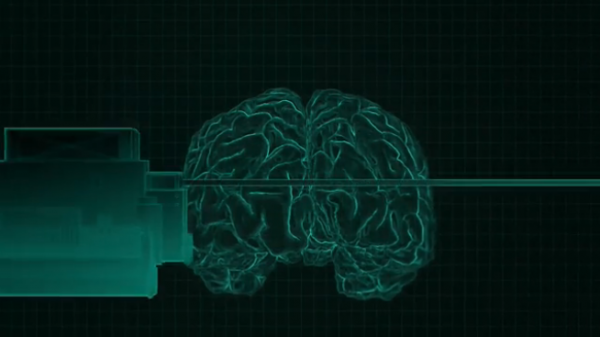Doctors Use 3D Printer to Help Save Toddler's Brain
| Dino Lirios | | Sep 08, 2014 01:14 AM EDT |
(Photo : Screenshot from www.theverge.com) A brain being scanned and built from a 3D printer
Doctors have turned to 3D printing to help save a toddler's brain.
Gabriel Mandeville was only five years old when he started having seizures known as "Mind Erasers" that made him forget everything he had ever learned.
His mother, Erin, noticed that something was seriously wrong with Gabriel when she saw her son's eyes roll backwards during these seizures.
Like Us on Facebook
Doctors at Boston's Children's Hospital tried all sorts of medicines and procedures to help quell the seizures. Gabriel's seizures, however, began to worsen.
Eventually, doctors recommended a procedure called a hemispherectomy.
The procedure is complicated and dangerous. It aims to separate the healthy half of the brain from the part causing the seizures.
Despite it being an invasive and difficult procedure, Erin agreed to the hemispherectomy, hoping it could help her son.
What also helped clinch her decision to go through with the procedure was know,ing her son would be the first patient to have his brain replicated by a 3D printed brain. Doctors decided to first go through practice runs before the actual operation.
Dr. Joseph Madsen, director of the epilepsy program at Boston's Children Hospital, said the hemispherectomy is one of the most challenging procedures in pediatric epilepsy surgery.
The 3D printed brain models helped surgeons hold, cut, manipulate, and practice the procedure beforehand.
"No one wants to be the first person to get a hemispherectomy from a surgeon, ever," Dr. Madsen said.
The 3D model of Gabriel's brain was developed at the hospital's Simulator Program that has been running since 2001. The program focuses on preparing and testing various facets of medical care.
The 3D model was printed in soft plastic and had 16 microns per layer. The blood vessels were set in contrast color for easier navigation. The model was good enough to allow surgeons to be more familiar with Gabriel's brain.
Gabriel's surgery took close to 10 hours. Gabriel is now 18 months-old and free of any seizures.
This 3D medical project has since developed 100 prints. Of this number, 20 percent found their their way into surgery rooms and assisted in successful operations.
Tags3D Printing, Gabriel Mandeville, Erin Mandeville, Boston's Children's Hospital, Dr. Joseph Madsen, Seizures, Mind-erasers
©2015 Chinatopix All rights reserved. Do not reproduce without permission
EDITOR'S PICKS
-

Did the Trump administration just announce plans for a trade war with ‘hostile’ China and Russia?
-

US Senate passes Taiwan travel bill slammed by China
-

As Yan Sihong’s family grieves, here are other Chinese students who went missing abroad. Some have never been found
-

Beijing blasts Western critics who ‘smear China’ with the term sharp power
-

China Envoy Seeks to Defuse Tensions With U.S. as a Trade War Brews
-

Singapore's Deputy PM Provides Bitcoin Vote of Confidence Amid China's Blanket Bans
-

China warns investors over risks in overseas virtual currency trading
-

Chinese government most trustworthy: survey
-

Kashima Antlers On Course For Back-To-Back Titles
MOST POPULAR
LATEST NEWS
Zhou Yongkang: China's Former Security Chief Sentenced to Life in Prison

China's former Chief of the Ministry of Public Security, Zhou Yongkang, has been given a life sentence after he was found guilty of abusing his office, bribery and deliberately ... Full Article
TRENDING STORY

China Pork Prices Expected to Stabilize As The Supplies Recover

Elephone P9000 Smartphone is now on Sale on Amazon India

There's a Big Chance Cliffhangers Won't Still Be Resolved When Grey's Anatomy Season 13 Returns

Supreme Court Ruled on Samsung vs Apple Dispute for Patent Infringement

Microsoft Surface Pro 5 Rumors and Release Date: What is the Latest?










